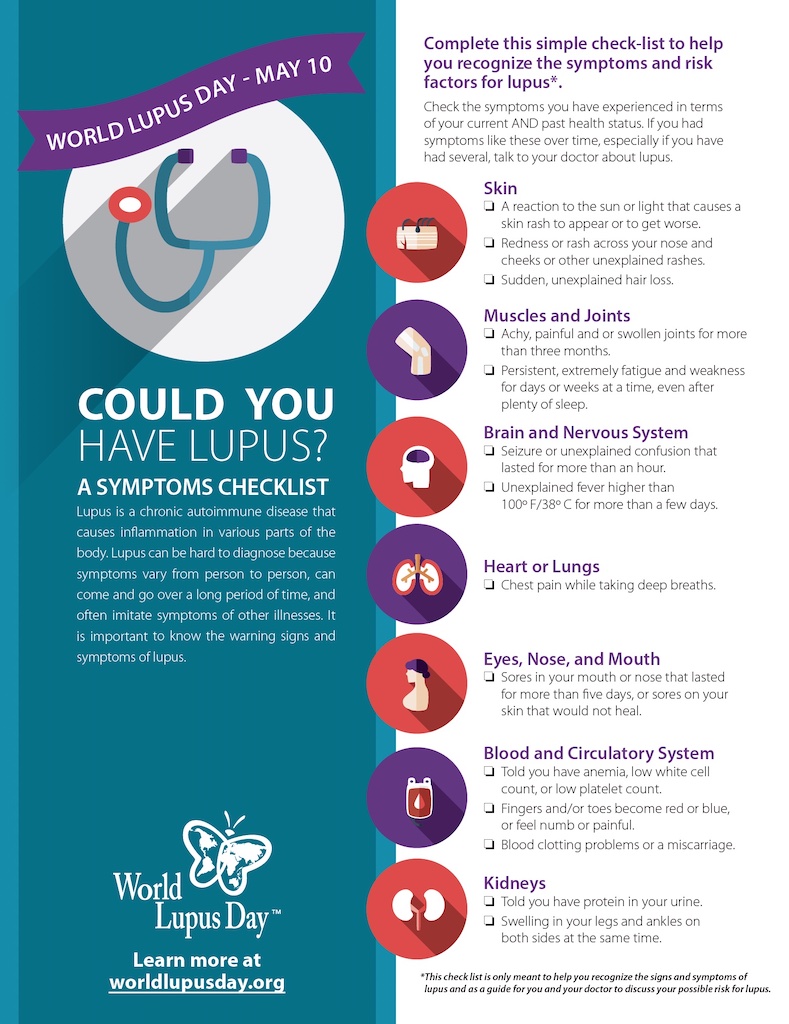Raising awareness of lupus
This chronic autoimmune disease causes inflammation and pain in any part of the body.
 World Lupus Day will take place on May 10 by the World Lupus Federation (WLF) to unite lupus groups around the world during Lupus Awareness Month but also to call attention to the impact that the disease has on more than five million people globally affected by lupus.
World Lupus Day will take place on May 10 by the World Lupus Federation (WLF) to unite lupus groups around the world during Lupus Awareness Month but also to call attention to the impact that the disease has on more than five million people globally affected by lupus.
Lupus is a chronic autoimmune disease that can cause inflammation and pain in any part of the body, including the heart, kidney, lungs, blood, joints and skin. With lupus, the immune system, the body system that usually fights infections, attacks healthy tissue. While anyone can develop lupus, 90 percent of people with the disease are women. It has no known causes or cure, and can be disabling and potentially fatal.
Access to care and medications continue to be a significant challenge for people with lupus around the world. A recent WLF global survey found that one in four respondents delayed or did not get medical care when needed in the last 12 months, with top reasons including wait times (44 percent), fatigue (22 percent), and cost (22 percent). Those that delayed or did not get care also were twice as likely to have multiple flares, a time when lupus symptoms, such as pain and inflammation, worsen.
The causes of lupus remain unknown, but scientists believe three factors may play a role: heredity, hormones and environmental factors. No single gene or group of genes has been proven to cause lupus. Lupus does, however, appear in certain families, and certain genes have been identified as contributing to the development of lupus. Two of the environmental factors are ultraviolet rays from the sun (which can activate inflammatory cells in the skin) and certain medicines. Also, infections and stress might play roles in triggering flares in some people. Lupus is not contagious. You can’t ‘catch’ lupus or give lupus to someone else.
Symptoms of lupus can vary from one person to another. The most common symptoms include joint and muscle pain, overwhelming fatigue, skin rashes, fevers, and hair loss. Some manifestations of lupus are not immediately apparent, and early diagnosis plays an important role in preventing damage to vital organs. If you think you might have lupus, you should see your doctor. There is no one test for lupus, so your doctor will need to take blood for a variety of tests. Your family health history and your own health history are also important parts of a lupus diagnosis.
Although there is no cure for lupus, early diagnosis and proper medical treatment can significantly help to control the disease. Because no two people with lupus are alike, the best treatment approach is with a healthcare team that will tailor treatment to your specific condition. People who are most successful at living with lupus have learned to balance their lives while living with a chronic illness. Maintain a healthy diet, get plenty of rest, avoid stress and exposure to the sun and ultraviolet light, stop smoking and drink only in moderation. Increasing numbers of research projects on lupus are underway, looking for new and improved treatments to manage lupus, and, one day, to find a cure.


0 Comments